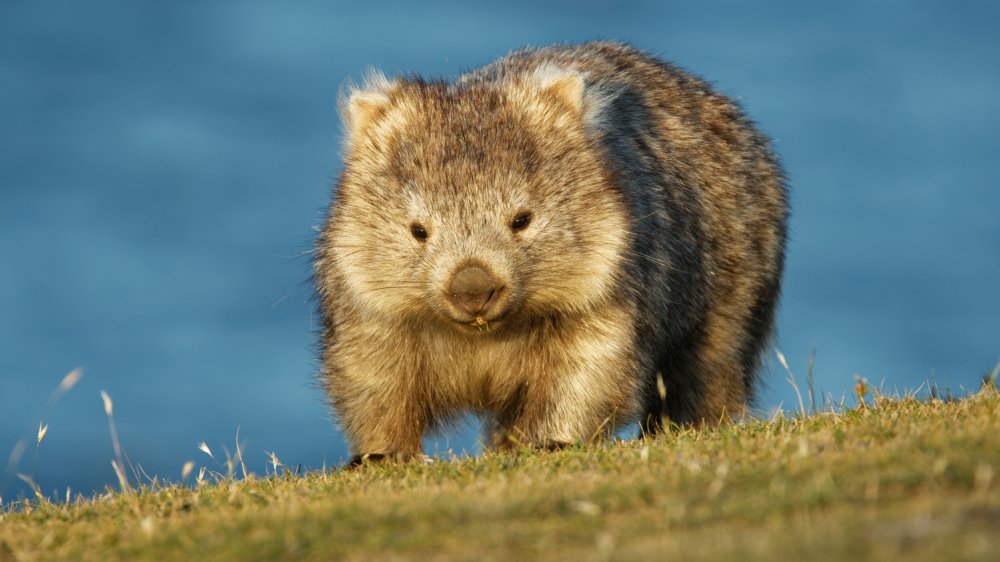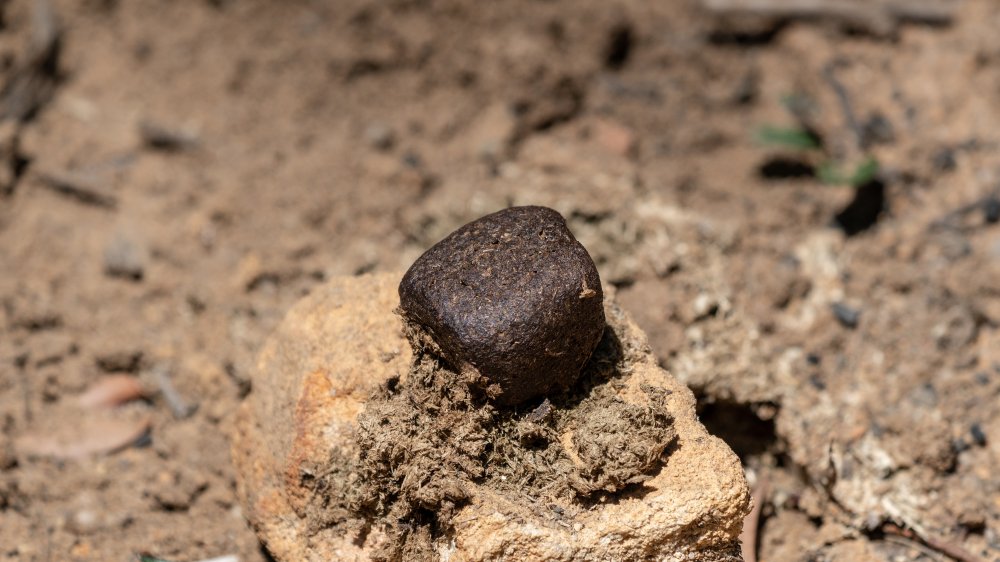The Real Reason Wombats Have Cube-Shaped Poop
Equipped with barrel-shaped bodies, flat claws, and muscular limbs, wombats are natural-born burrowers. According to the Australian Museum, wombats are actually Earth's largest burrowing animals, measuring 3.2 feet (98.5 cm) long and weighing 57.3 pounds (26 kg) on average. In 2020, their impressive networks of subterranean tunnels, known as warrens, made headlines when stories circulated alleging that they welcomed other animals into their underground abodes amid Australia's hellish wildfires, which have killed more than a billion animals. Writing for The Conversation, Charles Sturt University associate professor Dale Nimmo notes that Wombat warrens have served as havens for small animals in past fires as well. However, Nimmo pooh-poohs the suggestion that wombats benevolently invite other creatures into their homes in some heroic gesture.
Speaking of pooh-poohing, wombats have some of the most unique excrement on the planet. Per the BBC, these creatures excrete "up to 100 cube-shape poops a night." They're the only known animals on Earth to drop cube-shaped deuces, which used to be a real head-scratcher for scientists. As Dr. Patricia Yang of the Georgia Institute of Technology put it, "I have never seen anything this weird in biology. That was a mystery." Was this an example of colon art? Is it the stinky calling card of a marsupial superhero that rescues other creatures from natural disasters? Why is their solid waste block-shaped?
The wombat signal
It turns out that getting to the root of square poop is grim business. As the BBC details, Dr. Patricia Yang and a team of researchers studied the digestive tracts of wombats that were euthanized after being struck by vehicles. However, the scientists might not have found his undertaking so dark. As one researcher put it, "We opened those intestines up like it was Christmas." (We can only assume means that Santa used to leave cube-shaped lumps of coal in Hu's stocking because that's the only way that holiday reference makes sense).
The researchers inserted a balloon into the intestines, which they compared to pig innards, and found that compared to swine intestines, wombat tracts had more diverse elasticity, enabling the animals to sculpt poop into cubes on the way out. In order to communicate with each other, wombats actually stack their poop — "the higher the better," per the BBC. Put another way, wombats literally talk out of their butts.

